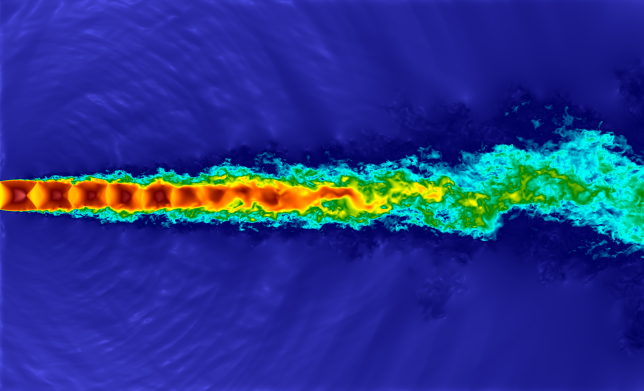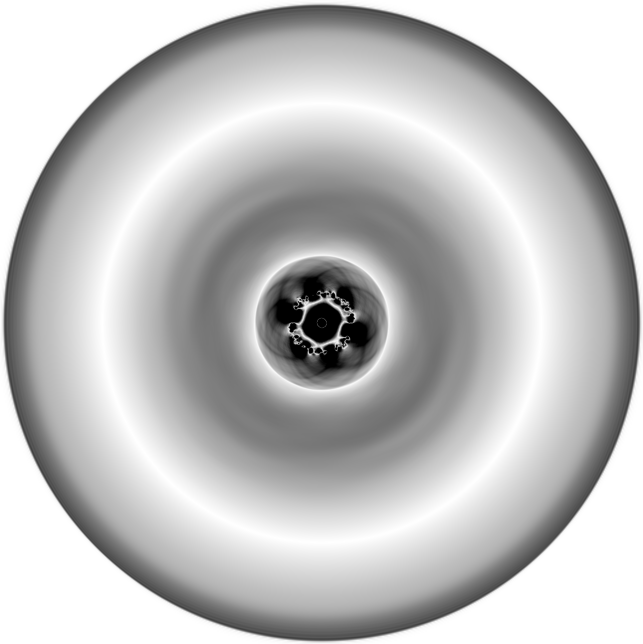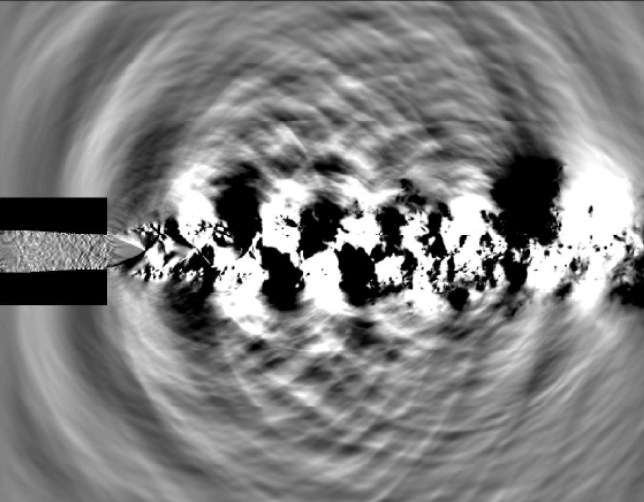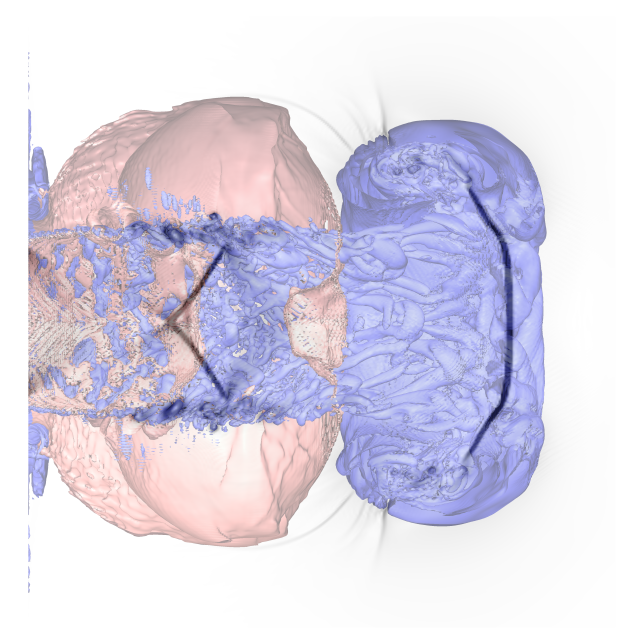Description
Noise prediction is one of the most discussed topics for Computational Fluid Dynamics today due to the fact that noise optimization, energy saving and pollutant emission minimization complement each other. In a GCS Large Scale project headed by Professor Jörn Sesterhenn of the Technische Universität Berlin, numerical simulations of a supersonic jet were performed on HPC system SuperMUC of LRZ, focusing on the research of the acoustic field.
The most accurate method to simulate this problem is based on Direct Numerical Simulation. However, this kind of simulation requires a huge amount of computational resources which to date are not available to most of the researchers or the industry. To overcome these limitations, a feasible approach to said problem is based on Large Eddy Simulations (LES). The downside of LES, however, is that only the large scales of the problem are solved whilst the small structures created by the turbulence are modelled with a mathematical algorithm. This is due to the fact that the small structures show universal behaviour.
Of special interest in this project was the so called 'near to intermediate field' in which the acoustic properties can be directly related to the fluid structures that generate these acoustic waves. For free round jets focusing the near to intermediate field, a simulation should be performed in a box of the dimensions 25D x 15D x 15D (while D is the diameter of the nozzle exit). In our case, a grid of 2048 x 1024 x 1024 cells was necessary. To perform the needed statistics, we had to run the simulation for a minimum of 30.000 time steps. This means that 2048 x 1024 x 1024 = 2.1 billion points and the governing equations had to be solved at every individual time step. Taking all these factors into account, this simulation required at least 22.9 million CPU hours which means this project would have taken more than 2614 years to compute if executed on a single CPU system. Thanks to now available petascale HPC systems like SuperMUC of the LRZ, though, projects of this magnitude can be tackled. Due to the fact that on SuperMUC more than 8000 CPUs simultaneously computed the numerical solution, we were able to execute this project within the time frame of just one year.
The results obtained through our simulations describe the noise generation mechanisms which take place in the supersonic jet case. The call 'turbulent mixing' noise is created in all kinds of jets, subsonic or supersonic, with or without shockwave structures. Turbulent mechanisms in the shear layer of the jet are the main reason for noise generation. This kind of noise is mainly radiated downstream of the jet. If the jet is supersonic and if it is not in adapted condition, a quasi-periodic structure with shockwaves is generated. These shock-cell structures generate some additional noise, which shows two different characteristics depending on the generating mechanism. 'Broadband shock-associated' noise radiates mainly in upstream direction and is generated by the present shock-cell structure. The other mechanism is the one that is being referred to as 'screech'. This is a single frequency tone which is the result of a feedback loop at the nozzle exit. The generated noise and the eddies which are detached from the shear layer generate a single frequency tone. Depending on the relative velocity of the jet to the speed of sound, different large coherent structures are present in the flow field, and the noise mechanism change. Examples of such structures are single or double helical modes and toroidal modes.
The most important finding is the different structures of the turbulent jets as opposed to the laminar ones. This implies weaker shockwaves and therefore weak shock turbulent interaction. At this point, we expect a more robust flow, but this will be investigated in some future project.
Objective
The main objective of the project was to perform numerical simulations of a supersonic jet at high Reynolds number with turbulent inflow conditions. Special focus was put on the detailed analysis of the shear layer that is generated in the boundary of the jet in order to simulate the physical processes that lead to the generation of noise for a round free jet. Turbulent inflow conditions were implemented by means of a recycling nozzle leading to a complete turbulent velocity profile in the inlet boundary condition of the jet domain.

Abbildung: Continuous stage of the free round jet. Contour of velocities in logarithmic color scale. The flow phenomena as well as the acoustic ones can be clearly seen in this dual image.

Abbildung: In the first stage of the jet, the first acoustic wave is shown over a plane normal to jet axis. In addition, the shear layer can be seen and the turbulent structures that in the shear layer are generated. The region in which the acoustic phenomena are radiated can be also perceived. Direct Numerical Simulation of a free round jet with Reynolds number 10000.

Abbildung: The absolute value of the pressure related to the ambient pressure ist plotted in a black and white contour. The different radiated noises can be clearly identified because of the direction of radiation.

Abbildung: In the starting stage of the free round jet, the Q-criterium and a pressure isosurface are plotted in blue and red, respectively. In black and white the density gradient is presented as a pseudo-schlieren over the mean plane. Here the interaction between flow and acoustic phenomena can be observed.
Contact
Juan José Peña Fernández
Tel: +49 30 / 31421131
juan.jose.pena.fernandez(at)tnt.tu-berlin.de
Dipl. Eng. Juan José Peña Fernández
FG Numerische Fluiddynamik
